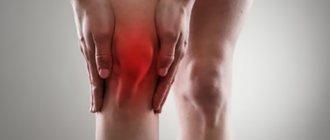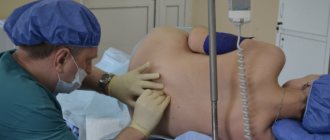Many pregnant women dream of giving birth as quickly as possible, because they believe that this way they will get over it faster and forget about the pain they experienced during labor. But, according to obstetricians and gynecologists, rapid labor is not entirely favorable for the mother in labor; it can cause a lot of complications during childbirth. For doctors, it is much better if a pregnant woman goes through all stages of labor gradually than to give birth at a rapid speed with a high risk of injury. Such births negatively affect not only the mother in labor, but also her unborn child, who can also be injured during childbirth.
According to statistics, normal labor for primiparous women should last about 12-14 hours, and for multiparous women - 8-10 hours. If labor is delayed, then we are talking about a protracted process of labor.
Precipitated labor is different from rapid labor. In the first case, labor lasts about 4 hours or less, and in the second – about 4-6 hours. There are cases when even a primigravida woman gives birth very quickly, it all depends on her individual characteristics.
_____________________
Malgina Milana, 31 years old:
“ I had a very rapid third birth.
Before I had time to arrive at the maternity hospital with painful contractions, 2 hours after hospitalization, the cervix opened up to 10 cm, and pushing began. Although upon admission there was a slight dilatation of the cervix. Everything was so fast that I was quickly seated in a chair. The midwife did not have time to put on medical gloves before the baby’s head appeared. She accepted the child with her bare hands. She herself was in shock, no less than me. This has never happened before in her practice. She said: if I had called an ambulance a little later, the paramedics would have had to deliver the baby at home. Due to rapid labor, the child was born with a single entanglement, and I had a small perineal tear.
But despite this, there were no serious consequences. The child was not injured, and I recovered in a short period of time. Therefore, I advise everyone who is not having their first birth: do not delay hospitalization. As soon as your contractions start, immediately go to the maternity hospital. ____________________ The most relevant and useful information for modern parents is in our newsletter. We already have over 30,000 subscribers!
Norms for the duration of labor
The normal duration of labor for primiparous women is approximately 7–14 hours. At the birth of subsequent children, this period is reduced to 5–12 hours (this is due to the fact that the reproductive organs are more prepared for the important process).
Labor, which lasts slightly less than the specified norms, is considered rapid (however, it still lasts more than 4 hours, with repeated births - more than 2 hours). In obstetrics, labor that takes up to 4 hours (for multiparous women less than 2 hours) is classified as rapid. According to statistics, they are observed in 0.8% of women.
It is interesting that some doctors do not strictly differentiate the concepts of “quick” and “rapid” labor, and sometimes simply use them as synonyms. Thus, there is a definition that the first lasts 4–5 hours, and the second lasts within 3 hours (meaning first-time women). Thus, it is not entirely clear what category to include a birth that takes, for example, 3.5 hours.
Rapid labor goes beyond the norm (it is pathological in nature), since it is a consequence of disorders that affect the contractility of the muscular uterine layer. The organ immediately begins to contract too often and actively, in some cases even developing a continuous spasm of the myometrium (or tetanus of the uterus). As a result, the cervix opens too quickly, and the fetus quickly overcomes the birth canal and is born.
Meanwhile, normal contractions are repeated after a certain period of time, at first it is quite long (20 minutes). Then the interval gradually shortens, and the force of tension in the muscles of the uterus increases. And these periods of time are very important: the woman in labor has the opportunity to rest, gain strength, and her uterus relaxes.
The interval between contractions is very important - it allows the woman in labor to rest and gain strength.
When in the next period (pushing) the baby gradually moves along the birth canal, he avoids injury, stress, and has enough time to prepare for his first breath.
In a normal birth, the baby moves through the birth canal gradually, avoiding injury and stress.
Ultra-fast childbirth can occur in two scenarios:
- All stages of labor are accelerated evenly.
- The first period passes normally, only the second stage is significantly accelerated (maybe only 1-2 attempts) - up to 5 minutes. This often occurs in multiparous women with a wide pelvis.
Although many pregnant women wish in their hearts that their birth would be very quick (they would have to suffer less), you need to realize that the pain that accompanies this process is compatible with life and is simply necessary for the natural physiological course of the process.
Video: rapid labor (explains doctor E. Berezovskaya)
Risk factors
The following factors predispose to the development of “speedy” labor:
- neuroses;
- parity (in the past 3 or more births);
- the pelvis is too wide and the fetus is small;
- premature birth;
- age (women under 18 years of age are characterized by immaturity and unpreparedness of the central nervous system for gestation and childbirth, and women over 30 have a burdened obstetric and gynecological history and chronic somatic diseases);
- isthmic-cervical insufficiency.
Factors that provoke rapid labor
The immediate cause of ultra-fast labor is increased excitability of the muscles of the uterus, when at a certain moment it begins to contract rapidly with little effort. Many factors play a role in this:
- Heredity. If rapid labor was not uncommon in a pregnant woman’s family, then there is a high probability that her child will be born in the same way.
- Age of the expectant mother. The risk category includes pregnant women under 18 years of age and women who give birth for the first time after 30. In the first case, the reproductive system is not yet fully developed, in the second, abortions, chronic or cured diseases often already occur.
- Frequent childbirth (short intervals do not give the reproductive organs the opportunity to fully recover).
- Features of the nervous system. This is increased nervous excitability (tendency to hysteria, neurasthenia, adverse reaction of thyrotoxicosis). The cerebral cortex may not adequately regulate impulses coming from the uterus. Due to a violation of the feedback mechanism, oxytocin, adrenaline, and other substances that affect the contractility of the myometrium are intensively produced. Another important point is the pregnant woman’s psychological unpreparedness for childbirth.
- Gynecological pathologies. Ultra-fast childbirth can provoke even slight inflammation of the genital area (endometritis, adnexitis, etc.), as well as the absence of one fallopian tube, ovary, genital infantilism, shortened cervix, increased level of estrogen in the body.
The cause of accelerated labor may be gynecological pathology, for example, a short cervix - Pathologies of pregnancy. Frequent threats of interruption, gestosis (hence swelling, high blood pressure), polyhydramnios. This also includes breech presentation and large fetal weight.
A pathological pregnancy (for example, with gestosis) can result in rapid labor - Erroneous actions of medical staff. Sometimes a woman is unreasonably given too large a dose of a drug to stimulate labor (and perhaps it is not needed at all in a particular situation).
Regarding the last factor, I can give a specific example from life. My former work colleague Svetlana told me that when she started having contractions, her husband took her to the maternity hospital (there was a preliminary agreement with the doctor). The doctor gave the woman a pill (explaining that it stimulates labor) and told her to take a walk with her husband for an hour or two. But Svetlana intuitively felt that there was no need to drink anything. They simply drove for the indicated time, and when they arrived at the hospital again, labor itself had already begun to actively develop. It can be assumed that if the woman did take the drug, labor would have accelerated significantly and, possibly, would have become pathological.
Meanwhile, if a woman belongs to one of the listed categories, it is not at all necessary that she will certainly have a rapid labor (it is not for nothing that their percentage is so low). With a high degree of probability, this pregnancy outcome can be assumed if in the past the child was born very quickly.
However, here you need to take into account the provoking factor. After all, if, for example, the reason is the actions of health workers who unreasonably administered a drug that accelerates contractions, then next time you just need to prevent such a situation. Well, if it’s a matter of heredity or gynecological pathology, then you already need to prepare for such a development of the scenario and take measures in advance.
Causes
The reasons for rapid and rapid labor are the same:
Genetically determined pathology of myocytes (muscle cells)
In this case, the excitability of myocytes is significantly increased and a slight force of influence is sufficient to cause contractions of the myometrium. This feature can be inherited, so the risk group includes women whose mothers or close relatives suffered a rapid or precipitate birth.
Excessive excitability of the nervous system
Emotional lability, a tendency to depression, neuroses, anxiety, as well as psychological unpreparedness for childbirth can provoke excessively strong labor. Pregnancy in women with hypertension, anemia, infectious diseases and pathology of the cardiovascular system is also at risk in terms of the development of rapid labor.
Diseases of the endocrine glands and metabolic disorders
This group includes diseases of the thyroid gland (for example, with thyrotoxicosis, metabolism accelerates and, accordingly, their effect on the nervous system). Diseases of the adrenal glands also contribute (increased synthesis of norepinephrine and acetylcholine - mediators that provoke excitability of the autonomic nervous system).
Aggravated medical history
Various pathologies of the reproductive system: cycle disorders, inflammatory diseases of the uterus and appendages, tumors and cysts, endometriosis, uterine malformations. The course of the previous birth matters: fast or rapid, protracted or traumatic for both mother and baby.
Pathology of real pregnancy
Severe early toxicosis and/or gestosis, polyhydramnios or oligohydramnios, large fetus size, placenta previa, kidney pathology, post-term pregnancy or Rh conflict.
Iatrogenic causes
Incorrectly calculated dosage when administering birth stimulants (oxytocin, prostaglandins). Also unjustified labor stimulation with the same drugs.
Outpouring of waters
Rapid emptying of the uterus in case of polyhydramnios when the water breaks can also trigger labor according to the “accelerated program”. A sharp and rapid decrease in intrauterine pressure irritates the myometrium and causes hypertensive contractions of the uterus. Therefore, in case of polyhydramnios, early amniotomy is performed with careful opening of the amniotic sac and monitoring the rate of release of water.
Prolonged irritation and compression of the cervix by the fetal head.
In this case, the first stage of labor is protracted, contractions last 10–12 hours, and the presenting part remains in the same plane for a long time, which causes compression and irritation of the cervix. After which the head begins its rapid movement along the remaining planes of the small pelvis, and the neck rapidly opens.
How to understand that rapid labor has begun
It is not difficult to recognize super-fast labor: everything begins unexpectedly and immediately too actively. The main symptom is the intensity of the very first ones, they last 2-3 minutes, and the interval does not exceed a couple of minutes. A woman may leak amniotic fluid at the same time (sometimes this happens before or after the initial contractions). At the same time, the woman’s breathing becomes frequent, arterial and intrauterine pressure increases (the latter can reach 200 mm Hg). Often the contractions take on the character of a spastic convulsion - they merge with one another.
The main sign of rapid labor is sudden, frequent and painful contractions.
Against the background of this condition, cervical rupture may occur, especially if this is the first birth.
After the rapid dilatation of the cervix, the period of expulsion is also shortened - the child is born as a result of several attempts (sometimes one or two are enough). Attempts, like contractions, are powerful and difficult for the woman in labor to control. Blood pressure remains elevated, and breathing and pulse are rapid.
Tactics of behavior of women and doctors
The danger of super-fast childbirth is that it can take a woman by surprise when she is outside the walls of the maternity hospital, for example, at home, in a store, or in transport. The lack of qualified medical care is fraught with danger for the pregnant woman and the child. Therefore, if the expectant mother feels characteristic signs, the main thing for her is to get to the hospital as soon as possible. Here doctors will try to slow down labor a little - to give the process a natural speed. The following measures are usually taken:
- The woman is asked to lie on her side.
- If the expectant mother knows the technique of proper breathing, she begins to perform exercises that promote muscle and psychological relaxation (they can be done from the first contractions - even outside the hospital).
- The woman in labor is given drugs to relax the uterus, and, if necessary, drugs to improve uteroplacental blood flow.
- The doctor constantly carefully examines the birth canal in order to detect the threat of injury or rupture in time.
- The fetus is constantly monitored (cardiac monitoring).
- Often there is a need for an emergency cesarean section, for example, when premature placental abruption occurs due to too intense contraction of the uterus, and hypoxia occurs in the fetus.
- If rapid labor has already begun in a medical facility and is caused by the administration of stimulant drugs, these drugs are immediately discontinued.
- After the birth of a child, women examine the birth canal especially carefully to detect possible damage and provide urgent assistance.
Of course, with rapid labor, doctors give the woman the opportunity to give birth naturally, but sometimes she has to do an emergency caesarean section
It is very important that during childbirth the expectant mother has a stable psycho-emotional state and is focused on a positive outcome.
Video: what is important to know about rapid labor
4.Treatment
Quick or rapid births are carried out in the position of the woman in labor lying on her side. The modern standard for drug support and normalization of labor are tocolytic drugs, for which, however, there is an extensive list of contraindications (thyrotoxicosis, uterine bleeding, asthma, diabetes, glaucoma, and many others). In some cases, the method of choice is cesarean section; Sometimes, to save the life of a woman in labor or a fetus, it is necessary to resort to emergency surgery, resuscitation measures, and blood transfusions.
Possible consequences for mother and child
Rapid labor always carries potential danger. So, a woman is likely to have the following complications:
- Premature placental abruption.
- Incomplete separation of the placenta, which can provoke postpartum inflammation of the surface of the uterus.
- Severe lacerations of the cervix and vagina, clitoris and perineum with significant bleeding. If there is a uterine rupture, then this is a direct threat to the patient’s life.
- Due to the rapid passage of the child, there is a risk of divergence of the pelvic bones, which is accompanied by severe pain (during normal labor, the bones expand gradually). It is also possible that there is excessive divergence of the symphysis pubis (the weakest point of the hip joint), inflammation of the symphysis: this pathology is corrected by surgery or by prolonged stay in a fixed position (the patient lies on her back with her legs apart, knees bent).
- Bleeding due to rapid emptying of the uterus and postpartum weakness of its muscles.
The rapid passage of the child through the birth canal is fraught with divergence of the symphysis pubis.
Possible consequences for the child:
- Due to excessive uterine contractions, blood circulation between the uterus and placenta is disrupted. As a result, the fetus may experience hypoxia. This requires urgent resuscitation measures (caesarean section). The baby may be born with asphyxia (no spontaneous breathing in the first minutes or isolated shallow or convulsive respiratory movements are observed). In the future, there is a risk that such a child will lag behind in development (physical and mental). Due to hypoxia, brain pathologies (partial death of its cells) are also likely.
- The baby's head, quickly moving through the birth canal, does not have time to adapt and experiences strong pressure. As a result, injuries and intracranial hemorrhage occur.
- The baby's spine, collarbones, humerus are injured (fractures are possible), as well as soft tissues (hematomas are formed). Indeed, during normal childbirth, the child moves through the birth canal progressively: he makes two movements forward - then one back. With a rapid process, the body simply does not have time to adapt.
- Possible hemorrhage in internal organs (for example, liver, kidneys, etc.).
The consequences of rapid labor can be asphyxia and hematomas in the newborn.
Out-of-hospital birth: emergency measures at the prehospital stage
Childbirth is the physiological process of expulsion of the fetus, membranes and placenta through the mother's birth canal.
A doctor, paramedic or midwife of emergency and emergency medical care (E&E) may be faced with any period of labor: dilation, expulsion, the afterbirth and early postpartum period.
A health worker must be able to diagnose periods of labor, assess their physiological or pathological course, find out the condition of the fetus, choose rational tactics for managing labor and the early postpartum period, prevent bleeding in the placenta and early postpartum period, and be able to provide obstetric care for cephalic presentation.
Childbirth outside a hospital most often occurs during premature pregnancy or during full-term pregnancy in multiparous women. In such cases, they usually proceed rapidly.
There are premature, urgent and delayed births.
A birth that occurs between 22 and 37 weeks' gestation and results in premature babies is considered premature. Premature babies are characterized by immaturity, their body weight ranges from 500 to 2500 g, length from 19–20 to 46 cm.
Childbirth that occurs during a gestational age of 40 ± 2 weeks and ends with the birth of a live, full-term fetus weighing approximately 3200–3500 g and a length of 46 cm is considered urgent.
Childbirth that occurs during a gestation period of more than 42 weeks and ends in the birth of a fetus with signs of postmaturity (dense skull bones, narrow sutures and fontanelles, pronounced desquamation of the epithelium, dry skin) is considered post-term. Childbirth with a post-term fetus is characterized by a high percentage of birth injuries.
There are physiological and pathological childbirths. A complicated course of labor develops in pregnant women with extragenital pathology, a burdened obstetric-gynecological history, or a pathological course of pregnancy.
Therapeutic and tactical measures for workers of the S&NMP
- Resolve the issue of the possibility of transporting a woman in labor to the maternity hospital.
- Assess general and obstetric history data: the number of pregnancies and births in history, their course, the presence of complications.
- Determine the course of this pregnancy: threat of miscarriage, general weight gain, blood pressure dynamics, changes in blood tests (according to the exchange card).
- Analyze data from a general objective study.
- Assess the period of labor: the onset of contractions, their regularity, duration, intensity, pain. Carry out 4 external examinations and determine the height of the uterine fundus, the position and position of the fetus, the nature of the presenting part and its relationship to the plane of the entrance to the pelvis (movable above the entrance to the pelvis, fixed by the small segment, the large segment at the entrance to the pelvis, in the cavity of the small pelvis, on the pelvic floor). Auscultate the fetus.
- Assess the nature of the discharge: the presence of bloody discharge, leakage of amniotic fluid, the presence of meconium in it.
- If necessary, perform a vaginal examination.
- Diagnose childbirth:
- first or repeated;
- urgent, premature or late;
- period of childbirth - dilation, expulsion, afterbirth;
- the nature of the rupture of amniotic fluid - premature, early, timely;
- complications of pregnancy and childbirth;
- features of obstetric and gynecological history;
- concomitant extragenital pathology.
- If conditions and transportation possibilities are available, hospitalization in an obstetric hospital.
If it is not possible to transport the woman in labor to the maternity hospital, labor management should begin. The woman is given a cleansing enema, the pubic hair is shaved, the external genitalia are washed with boiled water and soap, the bed linen is changed, under which an oilcloth is placed, and a homemade pad is prepared - a small pillow wrapped in several layers of sheets (preferably sterile). During childbirth, the pad is placed under the pelvis of the woman in labor: thanks to the elevated position, free access to the perineum opens.
From the moment of complete or almost complete dilatation of the cervix, the forward movement of the fetus begins along the birth canal (biomechanism of childbirth). The biomechanism of childbirth is a set of translational and rotational movements that the fetus produces as it passes through the birth canal.
The first point is that as labor progresses, the head is inserted in one of the oblique sizes of the entrance to the small pelvis: in the first position - in the right oblique size, in the second - in the left oblique size. The sagittal suture is located in one of the oblique sizes, the leading point is the small fontanel. The head is in a state of moderate flexion.
The second point is the internal rotation of the head (rotation). In a state of moderate flexion in one of the oblique dimensions, the head passes through the wide part of the pelvic cavity, beginning an internal rotation that ends in the narrow part of the small pelvis. As a result, the fetal head changes from an oblique size to a straight one.
The rotation of the head is completed when it reaches the exit cavity from the pelvis. The fetal head is installed with a straight arrow-shaped suture: the third moment of the biomechanism of childbirth begins.
The third point is extension of the head. Between the pubic symphysis and the suboccipital fossa of the fetal head, a fixation point is formed, around which the head is extended. As a result of extension, the crown, forehead, face and chin are sequentially born. The head is born with a small oblique size of 9.5 cm and a corresponding circumference of 32 cm.
The fourth point is the internal rotation of the shoulders and the external rotation of the head. After the birth of the head, internal rotation of the shoulders and external rotation of the head occur. The fetal shoulders produce an internal rotation, as a result of which they are installed in the direct size of the pelvic outlet in such a way that one shoulder (anterior) is located under the pubis, and the other (posterior) is facing the coccyx.
The born fetal head turns with the back of the head towards the mother's left thigh (in the first position) or towards the right thigh (in the second position).
A fixation point is formed between the anterior shoulder (at the point of attachment of the deltoid muscle to the humerus) and the lower edge of the pubis. The fetal body flexes in the thoracic region and the posterior shoulder and arm are born, after which the rest of the body is easily born.
The forward movement of the fetal head at the end of the second stage of labor becomes noticeable to the eye: a protrusion of the perineum is detected, increasing with each attempt, as a result of which the perineum becomes more extensive and somewhat cyanotic. The anus also begins to bulge and gape, the genital slit opens and at the height of one of the attempts, the lowest segment of the head is shown from it, in the center of which is the leading point. With the end of the attempt, the head disappears behind the genital slit, and with a new attempt it reappears: cutting in of the head begins, indicating that the internal rotation of the head ends and its extension begins.
Soon after the end of the pushing, the head does not go back behind the genital slit: it is visible both during the pushing and outside the latter. This condition is called eruption of the head. The eruption of the head coincides with the third moment of the biomechanism of childbirth - extension. By the end of extension of the head, a significant part of it has already emerged from under the pubic arch. The occipital fossa is located under the pubic symphysis, and the parietal tubercles are tightly covered by highly stretched tissues that form the genital fissure.
The most painful, albeit short-lived, moment of childbirth begins: when pushing, the forehead and face pass through the genital slit, from which the perineum slides off. This ends the birth of the head. The latter makes its outer turn, the head being followed by the shoulders and torso. The newborn takes its first breath, screams, moves its limbs and begins to quickly turn pink.
During this period of labor, the condition of the woman in labor, the nature of labor, and the fetal heartbeat are monitored. The heartbeat must be heard after each effort; You should pay attention to the rhythm and sonority of the fetal heart sounds. It is necessary to monitor the progress of the presenting part - during the physiological course of labor, the head should not stand in the same plane of the small pelvis for more than 2 hours, as well as the nature of the discharge from the genital tract (during the period of opening and expulsion of bloody discharge from the genital tract there should be no).
As soon as the head begins to cut in, that is, at the moment when, when an attempt appears, it appears in the genital slit, and with the end of the effort it goes into the vagina, you must be ready to give birth. The woman in labor is placed across the bed, her head is placed on a bedside chair, and a homemade pad is placed under the pelvis. Another pillow is placed under the mother's head and shoulders: it is easier to push in a semi-sitting position.
The external genitalia are washed again with warm water and soap and treated with a 5% iodine solution. The anus is covered with sterile cotton wool or a diaper.
The person delivering the baby thoroughly washes his hands with soap and treats them with a disinfectant solution; It is advisable to use a sterile disposable obstetric kit.
Accompanying childbirth involves providing obstetric care.
In case of cephalic presentation, obstetric aid during childbirth is a set of sequential manipulations aimed both at promoting the physiological mechanism of labor and at preventing injuries to the mother and fetus.
As soon as the head crashes into the genital slit and maintains this position even outside the contraction, the eruption of the head begins. From this moment, the doctor or midwife, standing to the right of the woman in labor, sideways to her head, with the palm of her right hand with her thumb held wide apart, clasps the perineum, covered with a sterile napkin, through which she tries to delay the premature extension of the head during contractions, thereby facilitating the emergence of the back of the head from under the symphysis . The left hand remains “ready” in case the forward movement of the head turns out to be too strong and the right hand alone would not be able to hold it. As soon as the suboccipital fossa fits under the pubic arch (the person delivering the baby feels the back of the head in the palm of his hand), and the parietal tubercles are palpated from the sides, they begin to remove the head. The woman in labor is asked not to push; with the palm of the left hand they clasp the protruding part of the head, and with the palm of the right hand with the thumb abducted they clasp the perineum and slowly, as if removing it from the head (from the face), at the same time with the other hand they carefully lift the head up - at the same time, first the forehead, then the nose are shown above the perineum , mouth and finally chin. It is absolutely necessary to withdraw the head until the perineum “comes off” from the chin, that is, until the chin comes out. All this must be done outside of a contraction, since during a contraction it is very difficult to slowly remove the head, and with rapid withdrawal the perineum is torn. At this moment, the flowing mucus should be sucked out of the fetal mouth, since the child may take the first breath, as a result of which the mucus can enter the respiratory tract and cause asphyxia.
After the head is born, a finger is drawn along the fetal neck to the shoulder: check whether the umbilical cord is wrapped around the neck. If there is an entanglement of the umbilical cord, the loop of the latter is carefully removed through the head.
The born head usually turns with the back of the head towards the mother's thigh; sometimes external rotation of the head is delayed. If there are no indications for the immediate end of labor (intrauterine asphyxia of the fetus, bleeding), one should not rush: one must wait for the independent external rotation of the head - in such cases, the woman is asked to push, while the head is turned with the back of the head towards the mother’s thigh and the front shoulder comes under the womb.
If the front shoulder does not fit under the womb, help is provided: the turned head is grabbed between both palms - on one side by the chin, and on the other - by the back of the head, or they place their palms on the temporo-cervical surfaces and carefully, easily rotate the head with the back of the head towards the position, at the same time carefully pulling it down, bringing the front shoulder under the pubic symphysis.
Next, they clasp the head with their left hand so that its palm rests on the lower cheek and lift the head, and with their right hand, just as they did when removing the head, they carefully move the perineum from the back shoulder.
When both shoulders are out, they carefully grab the baby by the body in the armpit area and, lifting it up, remove it completely from the birth canal.
The principle of “protecting the perineum” in anterior occipital presentation is to prevent premature extension of the head; only after the back of the head comes out and the suboccipital fossa rests on the lunar arch, the head is slowly released above the perineum - this is an important condition for preserving the integrity of the perineum and the birth of the head in the smallest size - small oblique. If the head erupts in the genital slit not at a small oblique size (with an occipital presentation), it can easily rupture.
Birth trauma of the newborn (intracranial hemorrhage, fractures) can often be associated with the technique and method of childbirth.
If obstetric manual assistance during the eruption of the head is carried out roughly (or the person delivering the baby presses on the head with his fingers), this can lead to these complications. To avoid such complications, it is recommended to eliminate the excessive back pressure of the stretching perineum on the fetal head, for which the operation of dissecting the perineum is used - perineo- or episiotomy.
Obstetric manual assistance during eruption of the head should always be as gentle as possible. It aims, first of all, to help the birth of a healthy child, without causing any trauma to him, and at the same time to preserve the integrity of the pelvic floor as much as possible. This is the only way to understand the term “perineal protection.”
Immediately after the birth of the head, mucus and amniotic fluid must be sucked out from the upper parts of the pharynx and nostrils using a pre-boiled rubber bulb. To avoid aspiration of stomach contents, the newborn's throat is first cleared, and then the nose.
The newborn baby is placed between the mother's legs on sterile diapers, covered with another one on top to prevent hypothermia. The child is examined and assessed using the Apgar method immediately at birth and after 5 minutes (Table). The Apgar method of assessing the condition of the fetus allows you to make a quick preliminary assessment of five signs of the physical condition of the newborn: heart rate - using auscultation; breathing - when observing the movements of the chest; baby's skin color - pale, cyanotic or pink; muscle tone - by the movement of the limbs and reflex activity when spanking the plantar side of the foot.
A score of 7 to 10 (10 points indicates the best possible condition of the infant) does not require resuscitation.
A score from 4 to 6 indicates that these children are cyanotic, have arrhythmic breathing, weakened muscle tone, increased reflex excitability, a heart rate above 100 beats/min and can be saved.
A score from 0 to 3 indicates the presence of severe asphyxia. Such children at birth should be classified as requiring immediate resuscitation.
0 points corresponds to the concept of “stillborn”.
Assessment at 1 minute after birth (or earlier) should identify infants who require immediate care, and assessment at 5 minutes correlates with neonatal morbidity and mortality.
After the first cry and respiratory movements appear, 8–10 cm away from the umbilical ring, the umbilical cord is treated with alcohol and cut between two sterile clamps and bandaged with thick surgical silk and a thin sterile gauze ribbon. The umbilical cord stump is lubricated with a 5% iodine solution, and then a sterile bandage is applied to it. You cannot use a thin thread to tie the umbilical cord - it can cut through the umbilical cord along with its vessels. Immediately, bracelets are placed on both arms of the child, which indicate his gender, surname and first name of the mother, date of birth and birth history number.
Further treatment of the newborn (skin, umbilical cord, prevention of ophthalmoblenorrhea) is carried out only in an obstetric hospital, under conditions of maximum sterility to prevent possible infectious and purulent-septic complications. In addition, inept actions during secondary processing of the umbilical cord can cause difficult-to-control bleeding after cutting the umbilical cord from the umbilical ring.
The woman in labor is drained of urine using a catheter and begins to manage the third stage of labor.
Management of the afterbirth period
The afterbirth period is the time from the birth of the child until the birth of the placenta. During this period, the placenta, along with its membranes, is detached from the uterine wall and the placenta with membranes is born - the placenta.
During the physiological course of labor in the first two periods (dilation and expulsion), placental abruption does not occur. The succession period normally lasts from 5 to 20 minutes and is accompanied by bleeding from the uterus. A few minutes after the birth of the child, contractions and, as a rule, bloody discharge from the genital tract occur, indicating detachment of the placenta from the walls of the uterus. The fundus of the uterus is located above the navel, and the uterus itself, due to gravity, deviates to the right or left; At the same time, there is an elongation of the visible part of the umbilical cord, which is noticeable by the movement of the clamp placed on the umbilical cord near the external genitalia. After the birth of the placenta, the uterus goes into a state of sharp contraction. Its bottom is located in the middle between the pubis and the navel and is palpated as a dense, round formation. The amount of blood lost in the afterbirth period should usually not exceed 100–200 ml.
After the birth of the placenta, the woman who has given birth enters the postpartum period. Now she is called a postpartum woman.
Management of the subsequent period of labor is conservative. At this time, you cannot be away from the woman in labor for even a minute. It is necessary to monitor whether everything is fine, that is, whether there is any bleeding - both external and internal; it is necessary to monitor the nature of the pulse, the general condition of the woman in labor, and signs of placental separation; urine should be removed, since a full bladder interferes with the normal course of the afterbirth period. To avoid complications, it is not allowed to perform external massage of the uterus or pull the umbilical cord, which can lead to disruption of the physiological process of placenta separation and severe bleeding.
The baby's place coming out of the vagina (placenta with membranes and umbilical cord) is carefully examined: it is laid out flat with the maternal surface facing up. Attention is paid to whether all placental lobules have come out, whether there are additional placental lobules, whether the membranes have completely separated. Retention of parts of the placenta or its lobules in the uterus does not allow the uterus to contract well and can cause hypotonic bleeding.
If the placental lobule or part thereof is missing and there is bleeding from the uterine cavity, you should immediately perform a manual examination of the walls of the uterine cavity and remove the retained lobule by hand. If there is no bleeding, the missing membranes do not need to be removed: usually they come out on their own in the first 3-4 days of the postpartum period.
The born placenta must be taken to an obstetric hospital for a thorough assessment of its integrity by an obstetrician.
After childbirth, the external genitalia are toileted and disinfected. The external genitalia, vaginal opening and perineum are examined. Existing abrasions and cracks are treated with iodine; ruptures must be repaired in a hospital setting.
If there is bleeding from soft tissues, it is necessary to apply sutures before transport to an obstetric hospital or apply a pressure bandage (bleeding from a rupture of the perineum, clitoral area), vaginal tamponade with sterile gauze pads is possible. All efforts during these manipulations should be aimed at urgent delivery of the postpartum woman to the obstetric hospital.
After giving birth, the postpartum woman should be changed into clean linen, placed on a clean bed, and covered with a blanket. It is necessary to monitor the pulse, blood pressure, condition of the uterus and the nature of the discharge (bleeding is possible); you should give the woman hot tea or coffee. The placenta, the mother and the newborn must be taken to the obstetric hospital.
A. Z. Khashukoeva, Doctor of Medical Sciences, Professor Z. Z. Khashukoeva, Candidate of Medical Sciences M. I. Ibragimova, Candidate of Medical Sciences M. V. Burdenko, Candidate of Medical Sciences Russian State Medical University, Moscow
Features of the rehabilitation period
As for the rehabilitation period, it depends on the presence of complications that arose during rapid labor. Of course, there are many cases when everything goes quite well (this largely depends on the correct actions of the medical staff). In such a situation, the mother and child spend the usual time in the maternity hospital and are then discharged.
If there have been injuries, ruptures, inflammation of the reproductive organs and other undesirable consequences, then the time of stay in the medical institution increases until the patient’s condition stabilizes. When problems arise in the baby, he is observed for some additional time, and if everything is serious enough, he is transferred to a children's hospital.
If the rapid birth went well, mother and baby are in the maternity hospital for the standard number of days
Childbirth with husband
Pros
: - The presence of a loved one helps a woman relax, feel safe and calm.
— The future father helps the woman in labor breathe correctly, uses massage techniques to relieve pain and simply encourages the woman during childbirth. “Fathers who were present at the birth take even more tender care of their wife and child. — Joint participation in such an important process as childbirth helps to strengthen family relationships. Cons
: - Before giving birth, the expectant father must undergo
special training courses
and have detailed information about the birth process.
— To be present at childbirth, a man needs self-control and complete calm. — Before giving birth together, the husband must pass all the necessary tests in order to be admitted to the delivery room. — If a man does not want to be present at the birth, is afraid and is not mentally prepared for this, he will experience serious stress. — A man needs not only to be present during the birth process, but to actually participate in childbirth
, that is, to help the woman.
Preventive measures to avoid rapid labor
Of course, having realized the danger of super-fast childbirth, a woman will want to know how to minimize their likelihood. Indeed, some measures will help avoid such a development:
- You need to ask your mother, grandmother, and sister in advance about how their birth proceeded. If there have been cases of super-rapid childbirth in the family (especially repeated ones), you should definitely inform your doctor about this. The gynecologist will probably advise you to go to the maternity hospital some time before the PDR.
- It is better to go to the maternity hospital in advance even if the previous birth was quite quick.
- The expectant mother must responsibly prepare for childbirth: read relevant literature, watch educational videos, it is advisable to attend special courses that provide practical skills (proper breathing, physical exercise, etc.).
- During the period of bearing a child, it is important to strictly follow medical recommendations and, if necessary, be treated in a hospital (for ICI, threat of miscarriage, gestosis, etc.).
- In the last trimester of pregnancy, significant physical activity and heavy lifting should be avoided.
- You must always monitor your diet, sleep and rest patterns, and most importantly, your psycho-emotional state (if necessary, visit a psychologist).
- If the expectant mother is at risk of increased contractility of the uterus, she is prescribed relaxing medications (for example, No-shpa).
It is advisable to attend courses for pregnant women, where a woman will be taught proper breathing, relaxation exercises, and psychologically prepared for childbirth
Question answer
Is the risk of complications reduced during a second rapid labor?
No. The development of complications accompanies almost all rapid births, and the number of previous births does not matter.
My birth was easy and quick. She gave birth in 4.5 hours (first birth) and without any complications, including for the child. So, do doctors simply scare mothers with the consequences of rapid (quick) labor?
No, doctors are absolutely correct in warning about the high likelihood of complications in the event of an “accelerated” course of labor. And you were just lucky that there were no complications.
Will the next birth necessarily be shortened after a rapid labor?
There is no clear answer to this question. Of course, you have a high risk of so-called rapid labor, especially if there are predisposing factors, but it is quite likely that labor will progress normally.
I was in labor for a total of 12 hours. The child was “pushed” in one push. The extract from the maternity hospital says that the birth was rapid. Why?
You answered your own question. A rapid birth of the fetus occurs, and the period of contractions in duration approaches normal values, and the second period proceeds in one or two attempts. It was precisely on the basis of a significant shortening of the pushing period that obstetricians and gynecologists diagnosed rapid labor.
How to prevent accelerated labor?
Firstly, when determining a high degree of risk for rapid or rapid labor, you should strictly adhere to the recommendations of the obstetrician at the antenatal clinic. Avoid physical activity and heavy lifting, if necessary, undergo preventive treatment in a hospital (threat of premature birth, ICN, fetal growth retardation), attend courses on psychoprophylactic preparation for childbirth and be prepared for prenatal hospitalization in the maternity hospital.
Author:
Sozinova Anna Vladimirovna obstetrician-gynecologist
Reviews from women who went through rapid labor
Of course, rapid births are not that common, and they can go quite safely. However, this scenario always carries a potential danger for the mother and child. Therefore, every pregnant woman should know what to do in such cases and how to reduce the likelihood of the baby being born too quickly.
Higher philological education. Experience as a proofreader, editor, website maintenance, teaching experience (first category). Rate this article: Share with friends!










